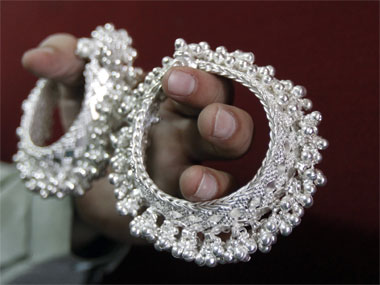Silver prices, which have been on a tear in recent weeks, plunged by nearly 20% in early trades in Asia on Monday morning, but left frenzied investors clueless about the underlying reasons for the fall.
Prices slid to $42 an ounce, nearly 20% from their Friday high, before pulling back above $45. The price fall may have been exaggerated by thin-volume trading - Monday is a holiday for May Day in most Asian markets - but it left investors wondering if the sharp rally in silver (and gold) prices in recent weeks, which some have characterised a bubble, is over.
Among the other possible explanations for the plunge are a perceived slowdown in China’s economy, and a short-covering in the US dollar position.
Economic data released in China over the weekend, which pointed to a slight slowdown in growth in the manufacturing sector. The official Purchasing Managers Index, a measure of the heartbeat of China’s manufacturing economy, fell to 52.9 in April from 53.4 in March.
Analysts, however, reckon that inflation pressures remain stubborn. “Growth has been cooled a bit, but inflationary pressures have not been meaningfully alleviated,” notes HSBC economist Qu Hongbin. Market watchers expect China’s central bank to announce a rate hike - perhaps as early as on Monday.
Silver prices have soared in recent weeks, driven up by a weaker US dollar and expectation of heightened demand from China and India. Over the past month, commodities have had a great run relative to other assets, but increasingly, there have been calls for caution among investors as the price rise has been too precipitous.
Others reasoned that a short-covering in the US dollar position may have prompted silver, as priced in US dollars, to fall. More outlier theories traced the recent upsurge in silver prices and today’s pullback to goings-on in Bolivia, where the government was considering nationalising mines.
Bullion bugs, who are no strangers to conspiracy theories, are also speculating that today’s plunge is part of a conspiracy among central bankers to burst the bullion bubble in order to restore confidence in paper currencies.


)




)
)
)
)
)
)
)
)